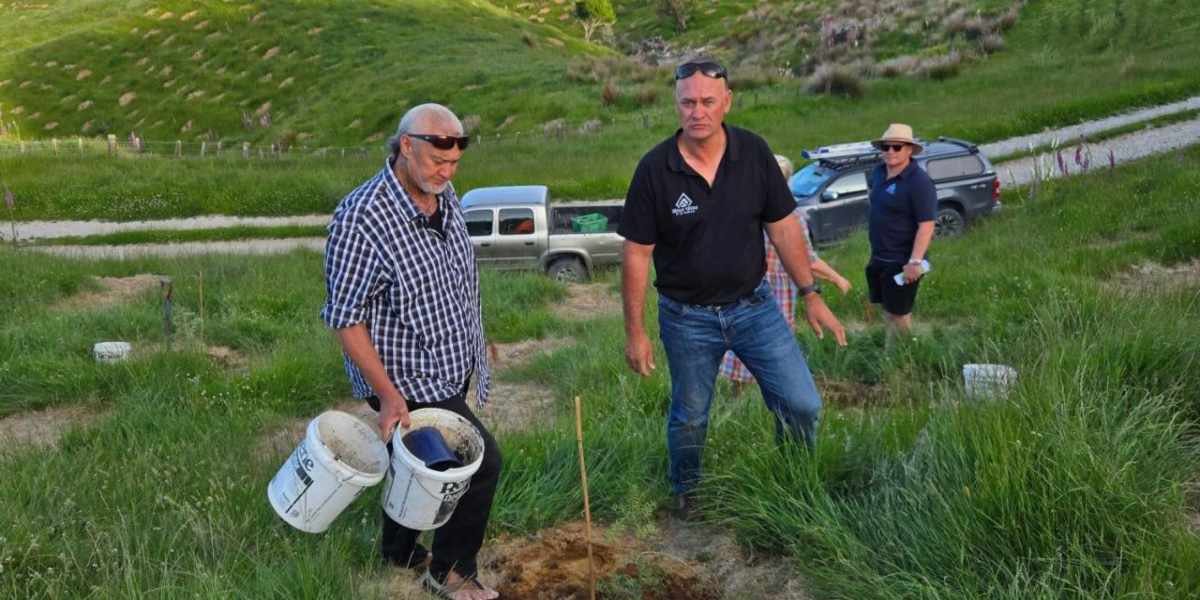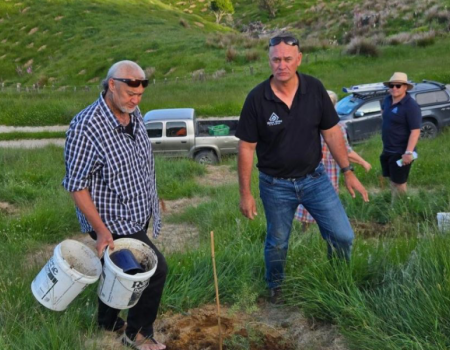Planting complete at Paritu Station — A win for jobs, nature, and the future
The final trees have gone in the ground at Paritu Station, marking a major milestone for the 1100-hectare site — and for Wairoa whānau. The planting, which wrapped up this year, is more than just a forestry project. It’s a big step toward creating jobs, regenerating native forest, and building economic resilience for our people.
Managed by Rata Forest Management Ltd and owned by Wharerata Forest Ltd — a partnership between Ngai Tāmanuhiri Tūtū Poroporo and Tātau Tātau o Te Wairoa — Paritu Station has been called a flagship for sustainable land use in Te Tairāwhiti.
Matene Blandford from Rata Forest Management Ltd, who’s been leading the project, says:
“We’ve finished the planting now, but this is just the beginning. There’s a 25 to 30-year work programme ahead with thinning, harvesting, and ongoing management. It’s creating real jobs for local people and long-term income for our iwi.”
The land has been planted with a mix of Radiata pine and native forest. Blandford says the pine will grow quickly and start generating income through carbon credits, helping pay off the whenua’s mortgage over the next 8–10 years. At the same time, large sections have been set aside for permanent native forest, with long-term goals to transition more pine areas—especially along the coastal edge—into natives over time.
“The pine gives us a short-term financial return and employment, but the vision is to build back native forest in the long run. Especially near the coast, where we’re protecting the fishery and preserving the mana of the whenua.” Matene explains.
A pre-plant harvest plan made sure that only the best-suited land was used for pine. Areas where planting could lead to erosion or damage to waterways were established in pine to quickly establish canopy cover and protect vulnerable soils. These areas will be managed on a Transitional Regime using specialist drone technology to chemically thin the pines out over time, allowing native species to naturally regenerate into the vacant light wells. All bare land within a 200m strip along the coastline has been planted in manuka to reduce the risk of slope failure leading to sedimentation of the fishery.
“We’ve already seen job creation through pest control and planting contracts,” says Matene.
“But the real strength is in the long-term. This isn't just seasonal planting work — this is a 30-year programme that will keep people employed through harvest cycles, forest maintenance, and environmental monitoring.”
This kind of sustainable employment is crucial in Wairoa, offering a real alternative to traditional industries and creating pathways for rangatahi to gain skills and stable income close to home.
“Forestry gets a bad rap sometimes,” Matene says, “but what we’re doing here is different. It’s about partnership, stewardship, and using the whenua wisely. We're not just extracting — we're investing in it and our people.”
Matene says Paritu isn’t just about trees. It’s also about cultural connection. In fact, Trustees from both iwi came together to plant Tōtara seedlings at the site earlier this year. These trees will one day be used by local carvers for whakairo — a reminder that this land is being nurtured not just for income, but for legacy.
“It’s inspiring to see this kind of vision come to life. This whenua will support jobs, protect our fisheries, grow taonga species, and help whānau thrive — all while paying for itself.”
With continued support, careful management, and ongoing collaboration between iwi, contractors, and community, Paritu Station is well on its way to becoming a model for what sustainable, iwi-led land development can look like.

